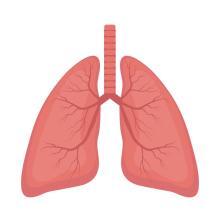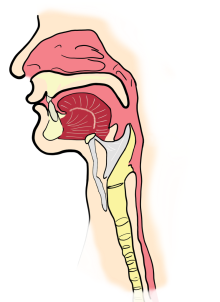חדשות המחקר

Maamoun Basheer, Elias Saad, Faris Milhem, Dmitry Budman, Nimer Assy: Regen-COV-2 Antibody Cocktail Mediated Clearance of SARS-COV-2 in an Immunocompromised Patient (Isr Med Assoc J .)
Coronavirus disease 2019 (COVID-19) affects different people in different ways. Most infected people develop mild to moderate illness and recover without hospitalization. This case report presents a patient who had difficulty eradicating the corona virus due to being treated with rituximab, which depletes B lymphocytes and therefore disables the production of neutralizing antibodies.

Liraz E Anavi, Einat Kodesh, Gur Mainzer: The Compatibility of Children with Obesity to Self-Report Aspects of Physical Activity Domains (Children (Basel) .)
Questions about the different aspects of physical activity (PA) are commonly asked in the clinical setting, yet their compatibility for use with children, particularly children with obesity (OB) is uncertain. Our aim was to investigate different PA-related questions when compared to an objective maximal cardiopulmonary exercise test (CPET) or validated questionnaires.

HCV Infection Increases the Expression of ACE2 Receptor, Leading to Enhanced Entry of Both HCV and SARS-CoV-2 into Hepatocytes and a Coinfection State (Microbiol Spectr .)
Recent studies suggest the enhancement of liver injury in COVID-19 patients infected with Hepatitis C virus (HCV). Hepatocytes express low levels of angiotensin-converting enzyme 2 (ACE2), the SARS-CoV-2 entry receptor, raising the possibility of HCV-SARS-CoV-2 coinfection in the liver. This work aimed to explore whether HCV and SARS-CoV-2 coinfect hepatocytes and the interplay between these viruses.
(Tom Domovitz, Samer Ayoub, Michal Werbner, Joel Alter, Lee Izhaki Tavor, Evgeny Tikhonov, Tomer Meirson, Yaakov Maman, Moshe Dessau, Meital Gal-Tanamy)

Noor Mruwat, Khalaf Kridin: Mortality in eight autoimmune bullous diseases: A global large-scale retrospective cohort study (J Eur Acad Dermatol Venereol .)
Autoimmune bullous diseases (AIBDs) are typified by a life-threatening potential and long-term sequela( 1,2). The current knowledge about the prognosis of AIBDs is principally confined to the most prevalent diseases; pemphigus vulgaris (P V)(3–5) and bullous pemphigoid (BP )( 4,6,7). Population-based estimates of mortality in other less frequent AIBDs remain to be delineated. Investigating the survival of patients with rare diseases is of great importance to better elucidate its burden and to tailor a convenient health policy enabling to improve its management. The aim of the current study is to assess the risk of mortality among patients with eight different AIBDs, namely BP, mucous membrane pemphigoid (MMP), epidermolysis bullosa acquisita (EBA), dermatitis herpetiformis (DH), lichen planus pemphigoides (LP P ), P V, pemphigus foliaceus (P F), and paraneoplastic pemphigus (P NP ).

Sophia Eilat-Tsanani, Carmel Kasher: Community-acquired pneumonia - use of chest x-rays for diagnosis in family practice (BMC Prim Care . )
According to guidelines, the diagnosis of pneumonia should be confirmed by chest x-ray, ensuring appropriate management and wise use of antibiotics. Our study aimed to describe use of x-rays by family doctors and patients following diagnosis of pneumonia in primary care practices in the north of Israel.

Samih Badarny: Management of advanced Parkinson's disease in Israel: Clinicians viewpoint and action items (Front Aging Neurosci . )
Parkinson's disease (PD) is taking a staggering toll on healthcare systems worldwide, with the bulk of the expenditures invested in the late stages of the disease. Considering the rising life expectancy and the increasing prevalence of PD across the globe, a clear understanding of the early signs and treatment options available for advanced PD (APD), will facilitate tailoring management programs and support services. This task is complicated by the lack of both global consensus in defining APD and standardized care guidelines. This perspective prepared by a panel of movement disorder specialists, proposes to extend and optimize currently accepted PD coding to better reflect the diverse disease manifestations, with emphasis on non-motor features.

Narjes Azzam, Amir Mari: Integrated Relaxation Pressure (IRP) Distinguishes between Reflux-Predominant and Dysphagia-Predominant Phenotypes of Esophageal "Absent Contractility" (J Clin Med . )
Patients with absent contractility (AC) often suffer from either reflux or dysphagia. It remains unclear what factors determine which phenotype patients present with. We sought to evaluate if high-resolution manometry metrics, especially integrated relaxation pressure (IRP), could explain this.

Rajesh Detroja, Somnath Tagore, Milana Frenkel-Morgenstern: tRNA methylation resolves codon usage bias at the limit of cell viability (Cell Rep .)
Codon usage of each genome is closely correlated with the abundance of tRNA isoacceptors. How codon usage bias is resolved by tRNA post-transcriptional modifications is largely unknown. Here we demonstrate that the N1-methylation of guanosine at position 37 (m1G37) on the 3'-side of the anticodon, while not directly responsible for reading of codons, is a neutralizer that resolves differential decoding of proline codons.

Omry Koren: Context-dependent differences in the functional responses of Lactobacillaceae strains to fermentable sugars (Front Microbiol . )
Lactobacillaceae are Gram-positive rods, facultative anaerobes, and belong to the lactic acid bacteria (LAB) that frequently serve as probiotics. We systematically compared five LAB strains for the effects of different carbohydrates on their free-living and biofilm lifestyles.

Maya Azrad, Lital Ashtamkar Matok, Tamar Leshem, Avi Peretz: Comparison of FT-IR with whole-genome sequencing for identification of maternal-to‑neonate transmission of antibiotic-resistant bacteria (J Microbiol Methods . )
Following a previous study in which we evaluated the carriage rates of extended spectrum β-lactamase (ESBL) -producing Enterobacterales (ESBL+ E), carbapenem-resistant Enterobacterales (CRE), vancomycin-resistant Enterococci (VRE), and methicillin-resistant Staphylococcus aureus (MRSA) among pregnant women and their neonates, in the current study we used, for the first time, Fourier transform infrared spectrometry (FT-IR) in order to determine whether antibiotic-resistant bacteria colonization in neonates has resulted from a vertical transmission from the mothers.

Gassan Moady, Dabbah Saleem: Outcomes among patients admitted for non-ST segment myocardial infarction in the pre pandemic and pandemic COVID-19 era - Israel Nationwide study (Int J Qual Health Care .)
Since the beginning of the COVID-19 pandemic in 2019, several countries have reported a substantial drop in the number of patients admitted with non-ST segment myocardial infarction (NSTEMI). We aimed to evaluate the changes in admissions, in-hospital management and outcomes of patients with NSTEMI in the COVID-19 era in a nationwide survey.

The value of clinical symptoms, the neutrophil-to-lymphocyte ratio, and ultrasonographic features in predicting adnexal torsion: A case-control study (J Obstet Gynaecol Res . )
Adnexal torsion remains a diagnostic challenge due to the nonspecific symptoms, sonographic features, and laboratory findings. The value of combining clinical, sonographic, and laboratory features is not well established, and controversy continues regarding their value in diagnosis. This study aimed to review sonographic, clinical, and laboratory features and to analyze their value separately and in combination, in managing and diagnosing adnexal torsions.
(Ala Aiob, Lior Lowenstein, Inna Borik, Karina Naskovica, Susana Mustafa Mikhail, Marwan Odeh)

Trishna Saha Detroja, Rajesh Detroja, Sumit Mukherjee, Abraham O Samson: Identifying Hub Genes Associated with Neoadjuvant Chemotherapy Resistance in Breast Cancer and Potential Drug Repurposing for the Development of Precision Medicine (Int J Mol Sci . )
Breast cancer is the second leading cause of morbidity and mortality in women worldwide. Despite advancements in the clinical application of neoadjuvant chemotherapy (NAC), drug resistance remains a major concern hindering treatment efficacy. Thus, identifying the key genes involved in driving NAC resistance and targeting them with known potential FDA-approved drugs could be applied to advance the precision medicine strategy. With this aim, we performed an integrative bioinformatics study to identify the key genes associated with NAC resistance in breast cancer and then performed the drug repurposing to identify the potential drugs which could use in combination with NAC to overcome drug resistance.

Familial Early-Onset Alzheimer's Caused by Novel Genetic Variant and APP Duplication: A Cross-Sectional Study (Curr Alzheimer Res .)
The clinical characteristics of symptomatic and asymptomatic carriers of early-onset autosomal dominant Alzheimer's (EOADAD) due to a yet-undescribed chromosomal rearrangement may add to the available body of knowledge about Alzheimer's disease and may enlighten novel and modifier genes. We report the clinical and genetic characteristics of asymptomatic and symptomatic individuals carrying a novel APP duplication rearrangement.
(Limor Kalfon, Hadas Raveh-Barak, Nadra Samra, Natalia Chasnyk, Nehama Cohen Kfir, Nissreen Kinaani Mousa, Efrat Shuster Biton, Mary Tanus, Tzipora C Falik Zaccai)

Khalaf Kridin: Isotretinoin and the risk of psychiatric disturbances - A global study shedding new light on a debatable story (J Am Acad Dermatol .)
Isotretinoin-related risk of depression and suicidal behavior is a topic of inconclusiveness. A crucial knowledge gap exists in defining the association of isotretinoin with other psychiatric comorbidities. Objective: To evaluate the risk of psychiatric outcomes among patients with acne treated with isotretinoin versus oral antibiotics.



